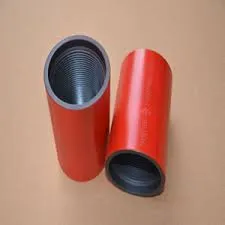- Afrikaans
- Albanian
- Amharic
- Arabic
- Armenian
- Azerbaijani
- Basque
- Belarusian
- Bengali
- Bosnian
- Bulgarian
- Catalan
- Cebuano
- Corsican
- Croatian
- Czech
- Danish
- Dutch
- English
- Esperanto
- Estonian
- Finnish
- French
- Frisian
- Galician
- Georgian
- German
- Greek
- Gujarati
- Haitian Creole
- hausa
- hawaiian
- Hebrew
- Hindi
- Miao
- Hungarian
- Icelandic
- igbo
- Indonesian
- irish
- Italian
- Japanese
- Javanese
- Kannada
- kazakh
- Khmer
- Rwandese
- Korean
- Kurdish
- Kyrgyz
- Lao
- Latin
- Latvian
- Lithuanian
- Luxembourgish
- Macedonian
- Malgashi
- Malay
- Malayalam
- Maltese
- Maori
- Marathi
- Mongolian
- Myanmar
- Nepali
- Norwegian
- Norwegian
- Occitan
- Pashto
- Persian
- Polish
- Portuguese
- Punjabi
- Romanian
- Russian
- Samoan
- Scottish Gaelic
- Serbian
- Sesotho
- Shona
- Sindhi
- Sinhala
- Slovak
- Slovenian
- Somali
- Spanish
- Sundanese
- Swahili
- Swedish
- Tagalog
- Tajik
- Tamil
- Tatar
- Telugu
- Thai
- Turkish
- Turkmen
- Ukrainian
- Urdu
- Uighur
- Uzbek
- Vietnamese
- Welsh
- Bantu
- Yiddish
- Yoruba
- Zulu
Compression Tubing Couplers for Efficient Fluid Transfer and Connection Solutions
Understanding Compression Tubing Couplers A Comprehensive Guide
In the realm of plumbing and fluid transfer, the efficiency and integrity of connections are paramount. One essential component that plays a crucial role in ensuring seamless fluid movement is the compression tubing coupler. This article explores what compression tubing couplers are, their applications, advantages, and installation tips, providing an in-depth understanding of this vital component.
What is a Compression Tubing Coupler?
A compression tubing coupler is a fitting designed to connect two lengths of tubing or pipe securely. It utilizes a compression mechanism, involving a nut, a ferrule, and a body, to create a tight seal without the need for welding or soldering. When the nut is tightened, it compresses the ferrule against the tubing, creating a strong, leak-proof connection.
Compression couplers are commonly made from materials such as brass, stainless steel, or plastic, depending on the application and environmental conditions. Their construction enables them to withstand various pressures and resist corrosion, making them suitable for diverse applications in various industries.
Applications of Compression Tubing Couplers
Compression tubing couplers find their use in many applications, including
1. Plumbing Systems They are often used to join water supply lines, whether in residential or commercial settings, facilitating efficient water flow and distribution.
2. Hydraulic Systems In hydraulic machinery, compression couplers are critical in ensuring that high-pressure fluids can be transferred securely between components.
3. Refrigeration and HVAC These couplers are used in the refrigeration industry to connect copper tubing, ensuring that refrigerants are transported efficiently without leaks.
4. Industrial Applications In various industries, including chemical processing and pharmaceuticals, compression couplers are essential for maintaining the integrity of fluid systems.
5. Gas Lines They can also be employed in gas lines, where a secure and leak-free connection is vital for safety and efficiency.
Advantages of Using Compression Tubing Couplers
The benefits of using compression tubing couplers are numerous
compression tubing coupler

- Ease of Installation One of the main advantages is their straightforward installation process. Unlike welded joints, which require special equipment and skills, compression couplers can be easily installed using basic tools, making them ideal for both professionals and DIY enthusiasts.
- Leak-Proof Sealing When properly installed, compression couplers provide a reliable leak-proof seal, which is especially important in systems where fluid integrity is critical
.- Versatility They can be used with a variety of materials and sizes of tubing, making them a versatile choice for different applications.
- Adjustability In some cases, compression fittings can be disassembled and reassembled, allowing for adjustments or repairs without replacing the entire assembly.
- Cost-Effectiveness Generally, compression couplers are more cost-effective compared to other types of fittings. Their durability and reliability often lead to lower maintenance costs over time.
Installation Tips
To ensure optimal performance from compression tubing couplers, consider the following installation tips
1. Clean the Tubing Always ensure that the ends of the tubing are clean and free from debris or corrosion before installation.
2. Follow Manufacturer Guidelines Each compression fitting may have specific installation instructions. Always refer to these guidelines to ensure proper assembly.
3. Tightening Use the appropriate tools to tighten the nut; however, avoid over-tightening, as this can damage the ferrule or tubing and lead to leaks.
4. Inspect the Connection After installation, check for leaks by testing the system under pressure before putting it into full service.
5. Regular Maintenance Periodically inspect the couplers for signs of wear or damage, especially in high-pressure applications, to maintain system integrity.
Conclusion
Compression tubing couplers are indispensable components in various fluid transfer systems. Their ease of use, reliability, and cost-effectiveness make them a preferred choice for many applications across different industries. By understanding their features and adhering to proper installation practices, users can ensure effective and secure connections, ultimately enhancing the efficiency of their systems. With the continuous advancements in materials and designs, compression couplers will remain a staple in fluid handling and plumbing for years to come.
-
Tubing Pup Joints: Essential Components for Oil and Gas OperationsNewsJul.10,2025
-
Pup Joints: Essential Components for Reliable Drilling OperationsNewsJul.10,2025
-
Pipe Couplings: Connecting Your World EfficientlyNewsJul.10,2025
-
Mastering Oilfield Operations with Quality Tubing and CasingNewsJul.10,2025
-
High-Quality Casing Couplings for Every NeedNewsJul.10,2025
-
Boost Your Drilling Efficiency with Premium Crossover Tools & Seating NipplesNewsJul.10,2025







